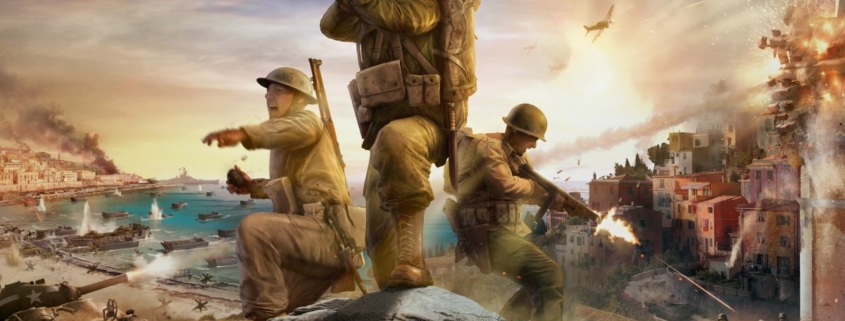Company of Heroes 3 review
Need to know
What is it? A WW2 RTS with two campaigns, one of them turn-based.
Expect to pay: £50/$60
Release date: February 23
Developer: Relic Entertainment
Publisher: Sega
Reviewed on: RTX 3080 Ti, Intel i7-8086K, 16GB RAM
Multiplayer? Yes
Link: Official site (opens in new tab)
World War 2 looms large at all times, from school history lessons to cinematic epics—even when we’re looking for some videogame escapism, it’s there, making us replay the Normandy landings or the Battle of Stalingrad, deafening us with the cacophony of artillery and exploding tanks. For Company of Heroes 3, however, Relic has taken us further south, to the vineyards of Italy and the desert of North Africa. And a lot has changed since the previous games, with the studio’s ambition and desire for experimentation growing. This is something new, but it’s not the novelties that have impressed me the most.
Company of Heroes 3 is a beast of a game, cramming in two campaigns and four factions. Its proportions are fitting for this devastatingly massive conflict. The main course, ostensibly, is the Italian dynamic campaign—promising something akin to a World War 2 Total War.
From Sicily to Rome, you’ll push your way north, fighting the Nazis in random skirmishes and incredible bespoke missions. It’s a huge turn-based campaign that serves up a slew of spectacular, tactically interesting RTS battles, and it should be the most exciting thing Relic has ever done. Lamentably, this is not the case due to the absence of one crucial ingredient: it isn’t remotely dynamic.
As an RTS, Company of Heroes 3 is right up there with the very best, but Relic’s experimental campaign is, tragically, a bit of a dud. Across my nearly 40-hour march to Rome, I encountered hardly any resistance at all. The only time my adversary attempted to take back a town I’d captured, it was a scripted event. Aside from that, the Nazis seemed resigned to let me keep everything I’d claimed. Regardless of the difficulty settings, aggression is a foreign concept to them.
If one of your companies encounters an enemy company, they’ll probably try to attack you after you’ve finished your turn, so they are at least willing to defend their territory, but they never go beyond that. This renders the campaign largely pointless, turning it into a perfunctory saunter. You’ll be told to defend towns and build emplacements to help with this, but doing so is a waste of companies and resources when the enemy will never venture south.
Pyrrhic victory 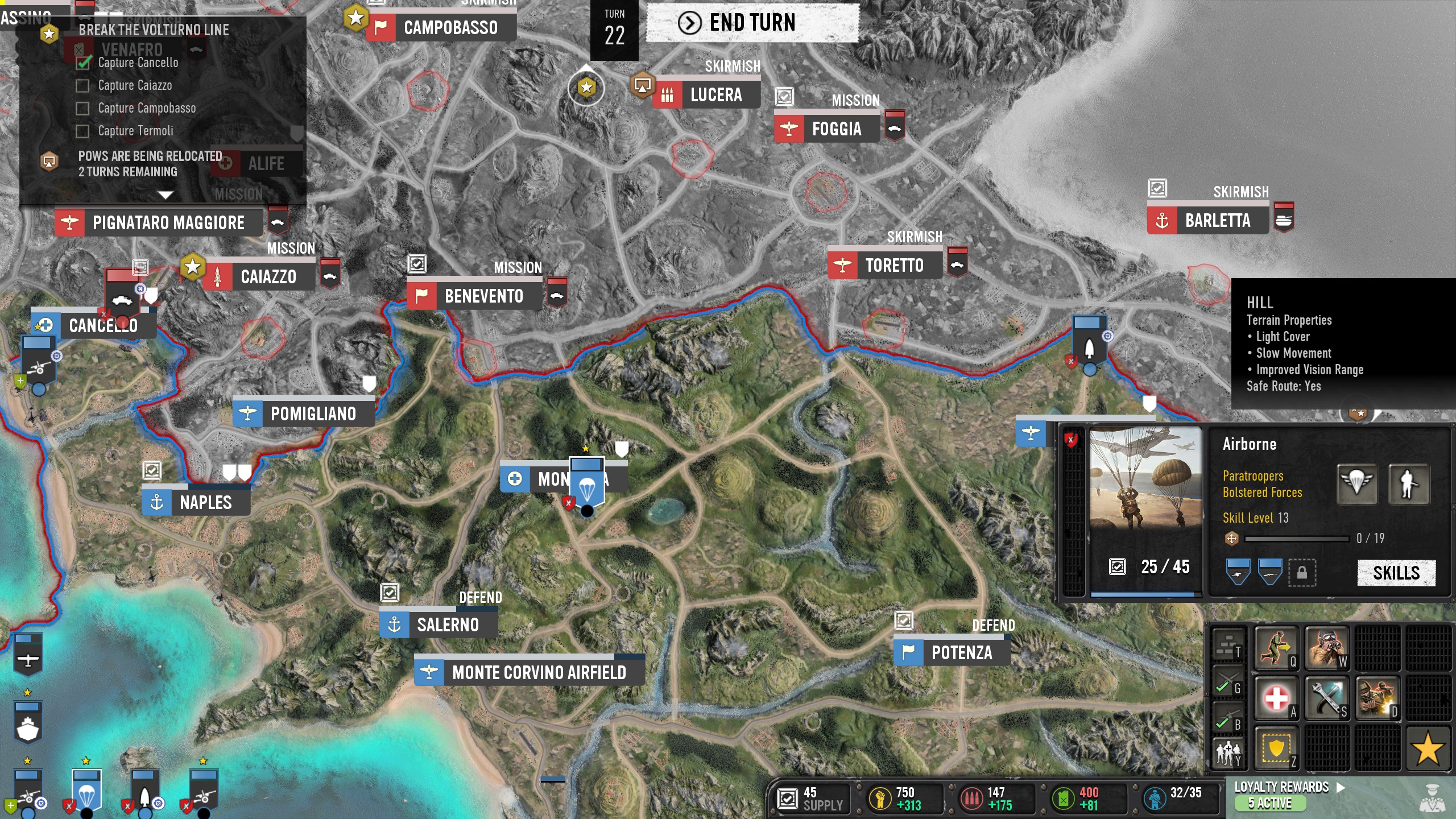
The Italian campaign, then, is fundamentally broken. This is especially frustrating when it’s clear how great it could have been. And even in this seemingly unfinished state, good ideas bubble to the surface, if you can push past the very rough UI and impotent opponent.
The Italian campaign, then, is fundamentally broken.
Each company you requisition is a powerful toolkit that contains not just a distinct selection of units you’ll field in the RTS scraps, but also a range of abilities that help on the campaign map. The Indian Artillery Company, for instance, can bombard enemy positions, softening up towns, removing emplacements, blowing up bridges and weakening enemy companies. So there are a lot of targets to destroy, but also lots of opportunities to build.
Along with the emplacements you can pointlessly cover Italy in, conquest provides yet more things to spend your resources on. Capture an airfield and you can start sending out reconnaissance planes to remove the fog of war, or bombers to prepare targets for a ground assault. Capturing ports, meanwhile, increases your population cap and gives you more ships, which can strike at enemy targets from the sea. Together these give you a tonne of options for how to approach every assault.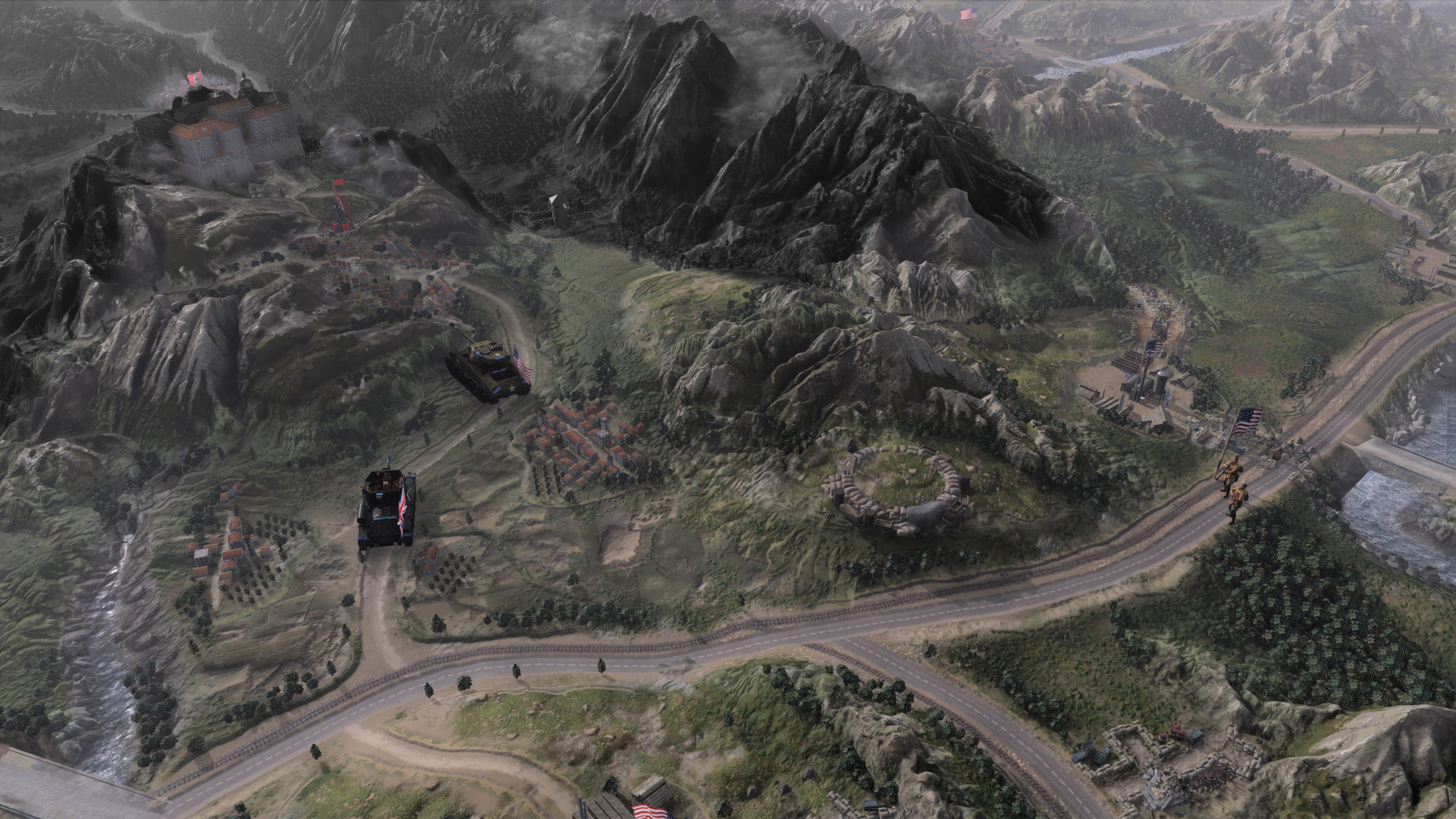
There’s also an elegance to the way Company of Heroes 3 makes its twin layers approachable and logical—each being a reflection of the other. So those ships and planes that can rain down hell on things on the campaign map also appear as abilities in the RTS battles. The rules and tricks and pretty much everything you can do in one layer don’t need to be cast aside when you enter the other one, maintaining this cohesive feel that even the king of this hybrid genre, Total War, hasn’t perfected.
Performance
Aside from a couple of missions where the frame rate temporarily dropped considerably, Company of Heroes 3 proved to be buttery smooth. Excessive alt-tabbing did make the campaign chug a bit on occasion, but my aging CPU likely didn’t help in that regard.
Significantly less elegant are the campaign progression systems, which are a bit of a tangled mess. Companies gain experience from battle, whether it’s a proper RTS fight, an auto-resolved scrap or just blowing up a bunker on the map, and from that experience you get a hefty supply of skill points, which in turn must be spent across three distinct systems: Abilities, Upgrades and Units. There’s too much to comfortably prioritise, especially when you’re juggling lots of different companies, and they just don’t fit together very well—even visually. The UI for each is completely different, as is the order in which you unlock things. It just feels like I’m dabbling in something that’s still in the concept phase.
Friends with benefits 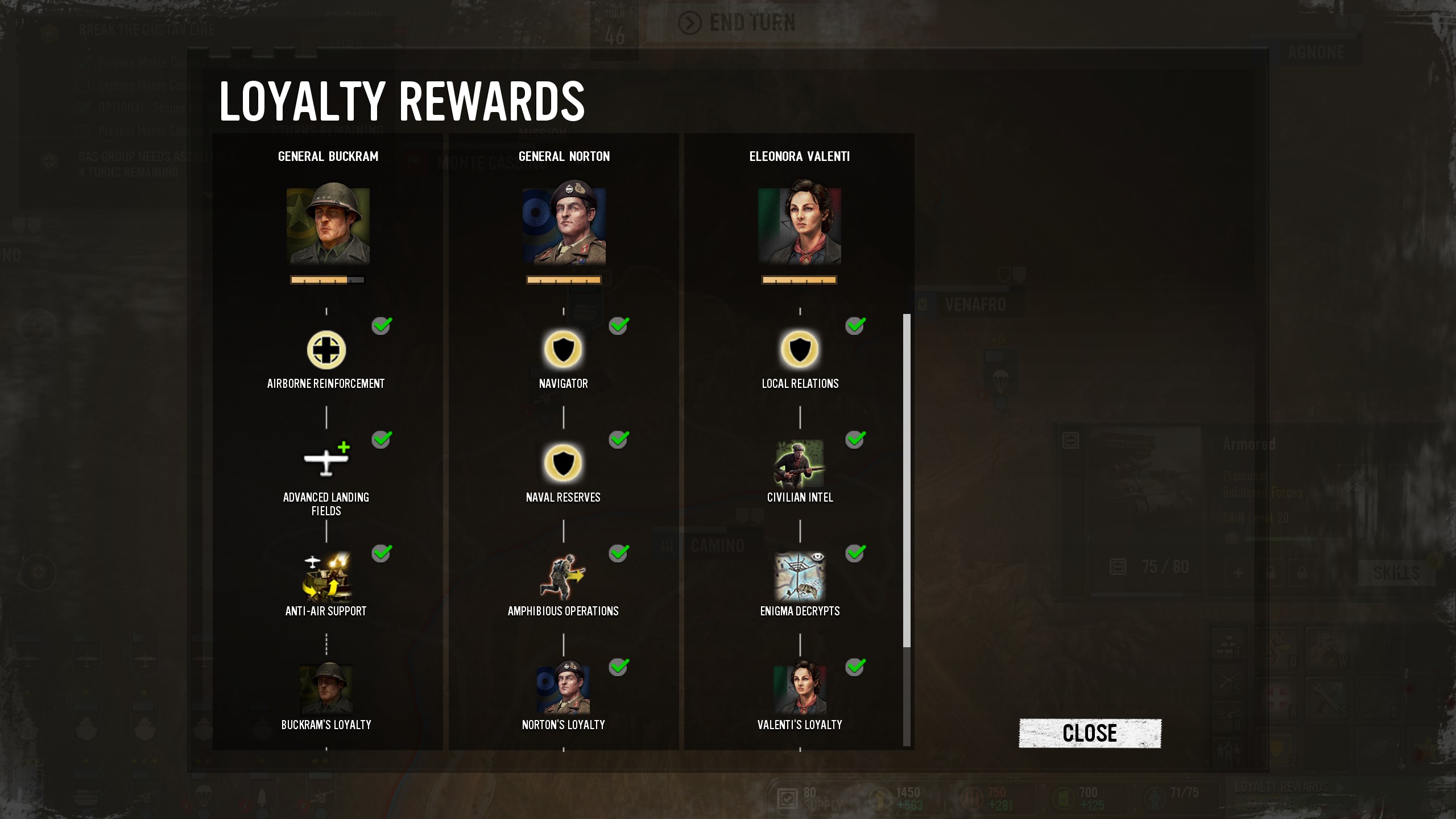
Subcommanders only add to the messiness by introducing one more progression system—another interesting idea that doesn’t quite land. Again, we have a list of unlockable bonuses, but this time it’s loyalty, not experience, that unlocks them. The British General Norton, US General Buckram and Italian partisan leader Valenti each have their own goals and personalities, and by agreeing with them in occasional conversations, performing missions for them, or simply acting in a way they like, you fill up their loyalty bar and unlock their bonuses. But it all feels a bit superfluous.
Win enough fights and Valenti doesn’t give a shit how many Italian towns you completely demolish.
The bonuses you’ll receive are sometimes pretty helpful if not especially flashy, like reduced ability cooldowns, but when it comes to developing the relationships that unlock them, there’s a serious lack of friction. While it initially seems like the tension between the trio will force you to make tough calls, in reality it seems like you’d really have to work hard not to make all three your BFFs. I got quite a lot of notifications about how I’d lost loyalty with Valenti because I was rather aggressive in my ‘liberation’ of Italy, but there were no consequences, because simply playing the game ensures that you’re constantly impressing them. Win enough fights and Valenti doesn’t give a shit how many Italian towns you completely demolish.
So the Italian campaign is not the slam dunk I was hoping for, but I find myself less disappointed than expected. I was anticipating something grand, something evocative of Total War, and it doesn’t remotely live up to this—but what it does is spit out incredible fight after incredible fight. So many highs, thrills, and god, the explosions? Impeccable. Pristine maps turned into hellish, crater-filled nightmares, buildings crumbling, tank husks smouldering, men running around on fire—it’s appalling but exciting.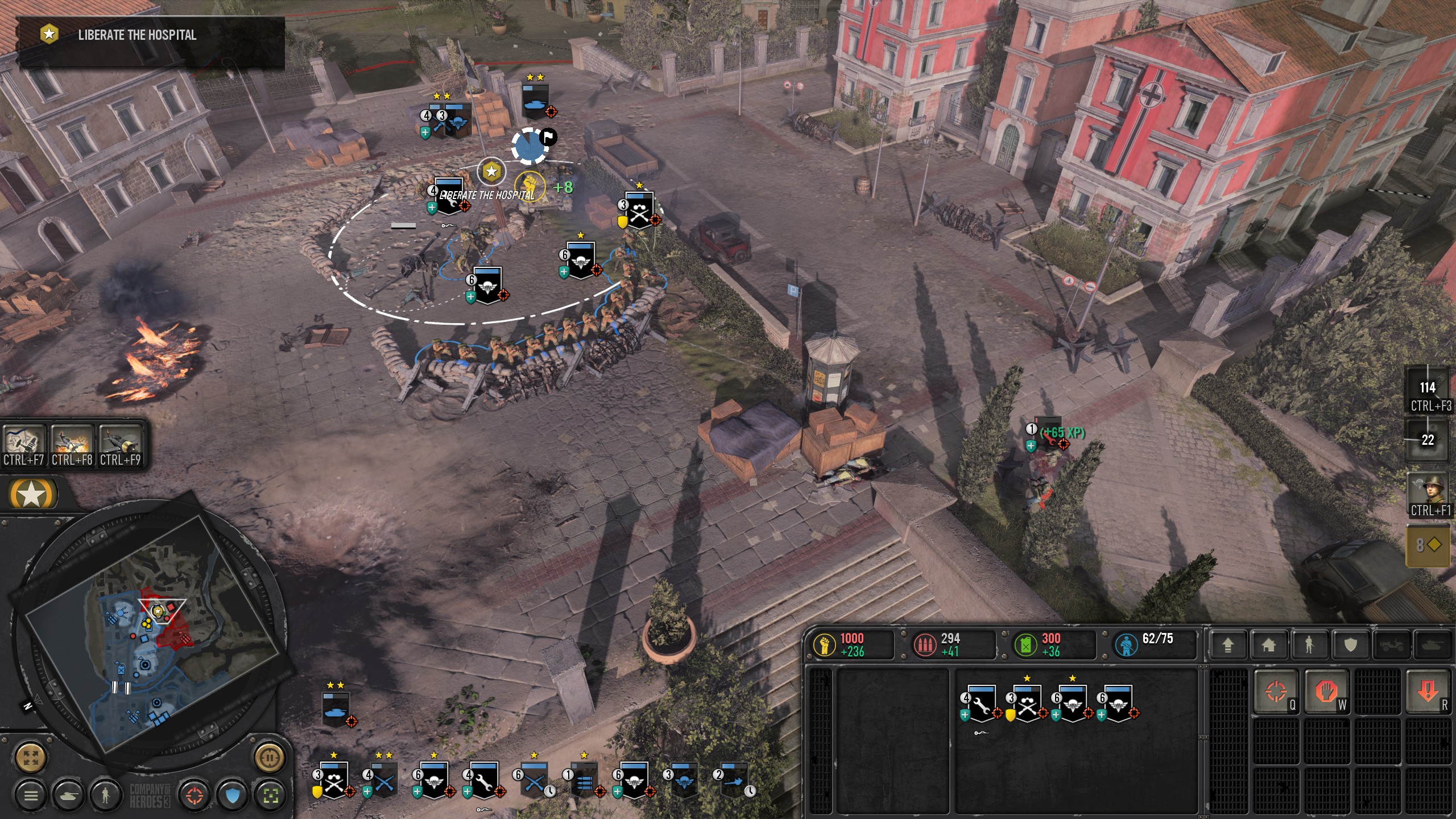
Here, in the RTS layer, we see real dynamism. And it even gives a glimmer of dynamism to the campaign map, where bombing the shit out of a location before you head into battle transforms it, pitting the ground and destroying buildings—which can have a dramatic impact on the ensuing fight. Once you enter the map, though, that’s when you become a proper terraformer, remaking and deconstructing Italy’s towns and countryside. The terrain reflects the decisions you make as you strategically take out anywhere Nazis might be hiding, as they do the same to you. Even the most stalwart cover is fleeting. When that “Mission Completed” notification pops up, you celebrate amid the apocalypse.
The Hedgerow Hell and frosty Russian maps of Company of Heroes 1 and 2 remain RTS high points, but Italy has spawned some of my favourite fighting spots. Narrow roads surrounded by tall buildings, hiding snipers and machine gun teams; winding countryside paths, where anti-tank guns hide behind every corner; the terrifying expanse of an airfield runway, where cover is a luxury and death seems perpetually imminent—even the memories of these encounters is enough to get my heart thudding like an artillery strike.
Each of the main missions is pure magic—even the overly ambitious final assault on the Winter Line. This climactic confrontation gives you different companies to control during different phases, and then lets you switch between them at will, and honestly it’s just a big bloody mess, like a co-op battle where you’re both players. But I still enjoyed it—the ambition, the spectacle, the chaos.
Good company 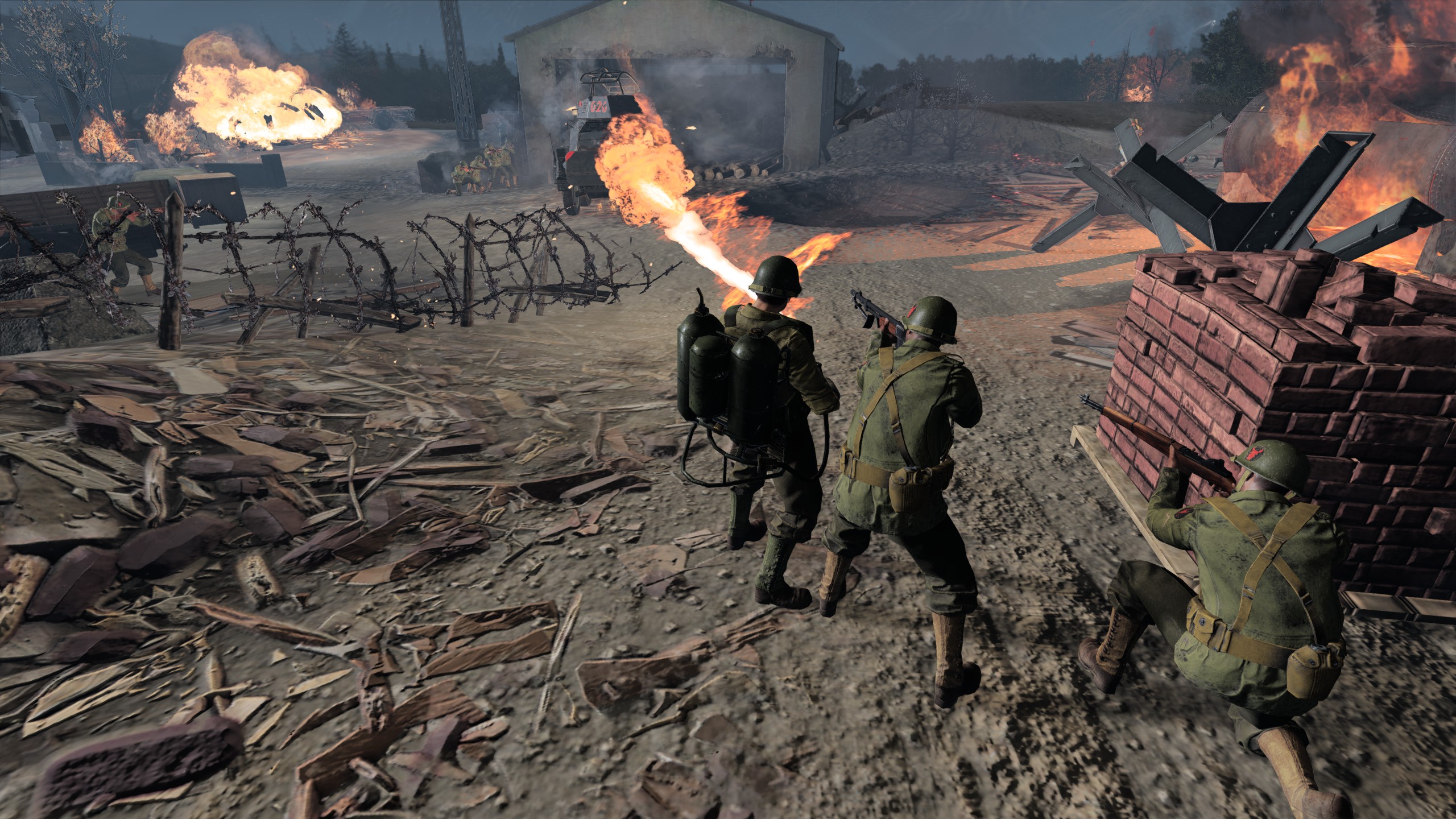
Between the big missions are countless random skirmishes, and given the length of the campaign I was worried they might start to get a bit stale. That didn’t prove to be the case, not just because the skirmish maps and objectives are numerous, but because each type of company has a different playstyle and different toys to play with, keeping things exciting even 40 hours in. The Indian Artillery Company remained a favourite throughout, however, calling in handy off-map artillery strikes, dropping powerful mortar teams into the battle, and letting me play with the badass Gurkha unit. These lads can toss a whole barrage of grenades at the enemy, and it’s always a good time. If you like explosions—and if you’re playing Company of Heroes, you must—you’re going to have a blast with this company.
Each type of company has a different playstyle and different toys to play with, keeping things exciting even 40 hours in.
Every company has a fantastic hook, mind you, from the tank-heavy US Armored Company to the sneaky US Airborne Company. And while they all have their own unique tricks, they’re all incredibly versatile, too, more than capable of taking on any challenge, just in slightly different ways. The tactical pause system makes getting to grips with each company, and the units within them, a lot easier, giving you the space to set up and coordinate more elaborate attacks, or create a chain of orders. You can take all the time you need to throw down some smoke grenades, move your gun crews into position, call down an airstrike and send some brave lads into a fortified building to breach it, before unpausing the action and watching it all play out like a deadly ballet.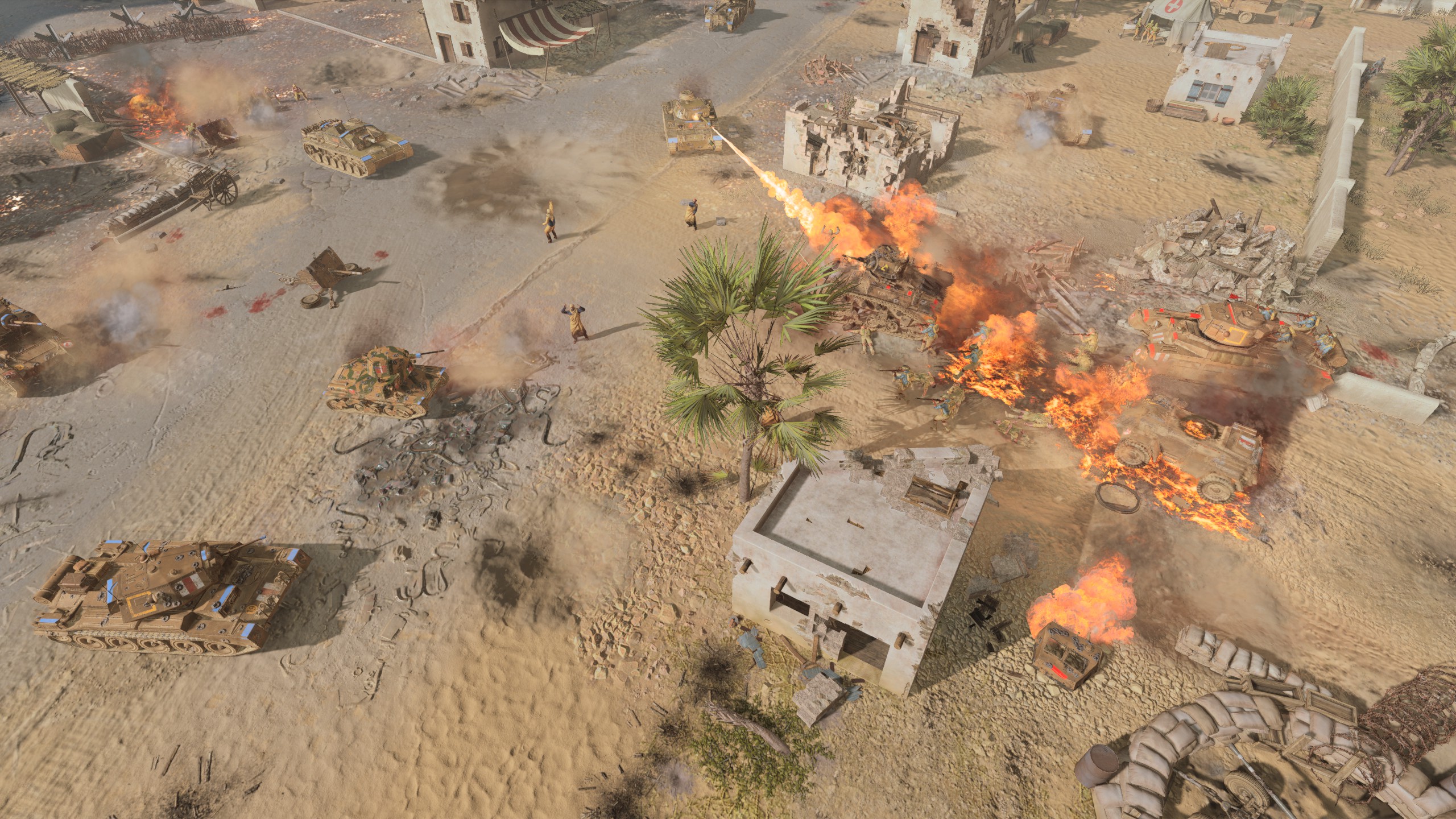
The much brisker North African campaign is Company of Heroes at its more traditional—a linear series of eight missions that sees you commanding the Deutsches Afrikakorps (DAK) and taking your marching orders from Rommell. Narratively it’s a weird one, attempting to balance the discomfort of playing as historical villains by interspersing it with the stories and perspective of Jewish Berber’s fighting against the Nazis, or living in occupied areas. The attempt to tell less well known stories, giving the oppressed a voice and even using their language, is a welcome one, but it feels awkwardly stitched together and is, ultimately, telling us stories about people that only exist in mostly static cutscenes.
While the campaign’s storytelling lacks impact, the missions themselves are a pleasantly diverse bunch, running the gamut from huge, multi-phase epic confrontations with offensive and defensive portions to smaller, focused scenarios where you’re setting up traps for convoys or hunting down tank commanders.
The North African maps are also a big change of pace from their Italian counterparts. The frequency of the wide, open spaces initially makes them seem less tactical, but they are perfect for the DAK, a faction that’s all about tanks. The desert really lets these behemoths rips, in turn emphasising some of Company of Heroes 3’s new features, like tank riding and side armour. Tanks are more versatile, but also require a bit more micromanagement, blessing these fights with more tension, even as you ride into battle with the deadliest of monsters.
Infinity war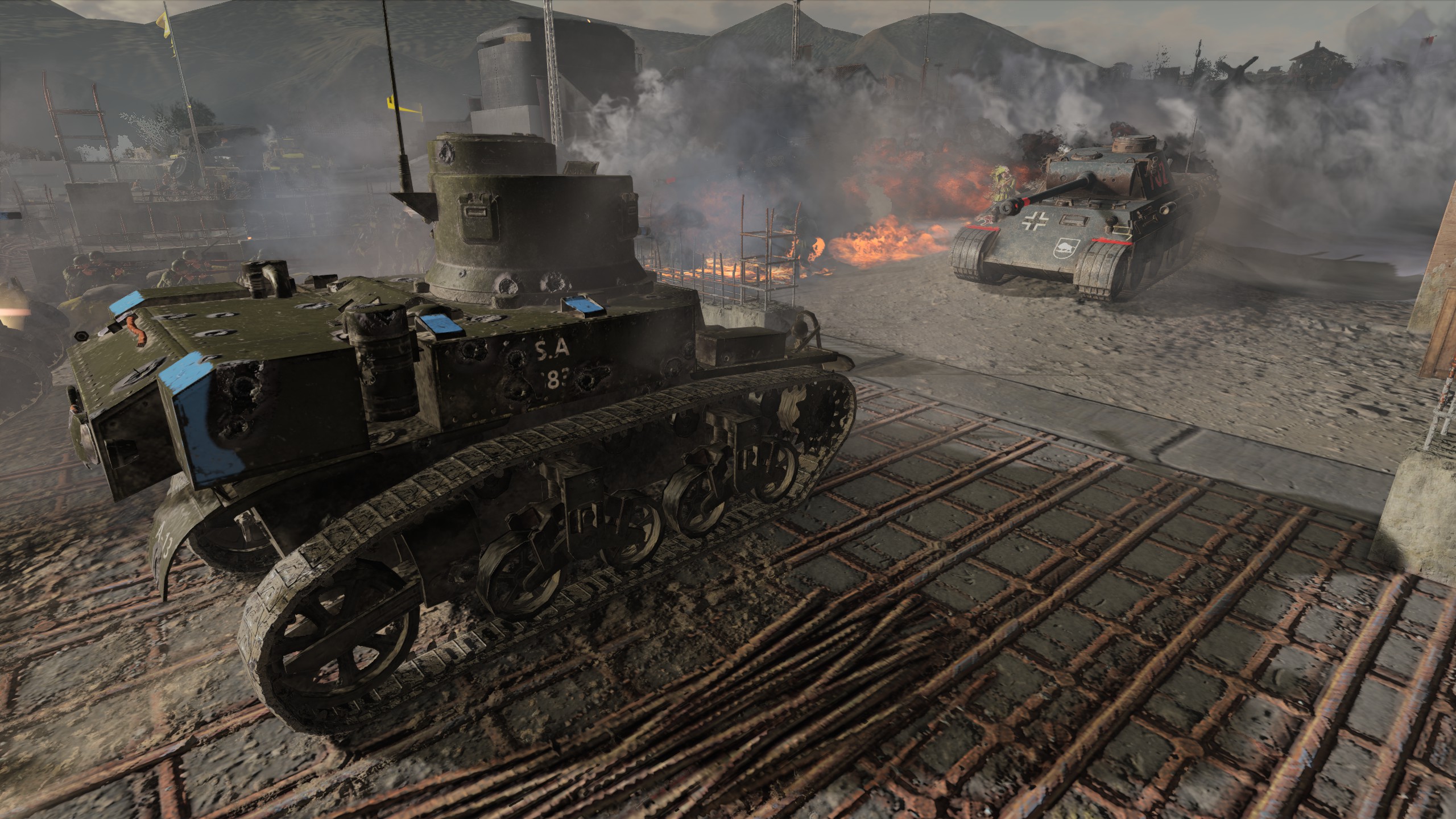
Together the two campaigns give you plenty of battles, but the multiplayer and skirmish modes extend that even further, letting you fight other players or go on a good old fashioned comp stomp as one of the four factions (US Forces, British Forces, Wehrmacht, Afrikakorps). This quartet can then be further specialised in-game by picking specific battlegroup upgrade paths that reflect the companies of the campaigns.
It is a flawed experiment that has nonetheless provided me with real-time brawls that I simply cannot get enough of—I love it.
The campaign AI, at least in the RTS layer, is serviceable if conservative, so it’s really in multiplayer where the depth of Company of Heroes 3’s strategy is truly revealed, and its most exciting confrontations. 14 maps are already in play, and mod support means we should see more appear courtesy of the community after launch. I expect to spend a lot of time here now that I’ve finished my tour of duty in the campaigns, and I’ve already had a blast blowing up (and getting blown up by) my fellow critics.
Company of Heroes 3 is a hard game to render a verdict on. Patches may improve the Italian campaign, but right now it’s impossible to look at it as anything other than a failure. Yet I’ve had weeks of fun with the RTS, and can’t wait to keep playing as more players enter the battlefield at launch. It is a flawed experiment that has nonetheless provided me with real-time brawls that I simply cannot get enough of—I love it. If you’re willing to accept that the campaign is just a vehicle for fantastic battles, I think you might love it too.

